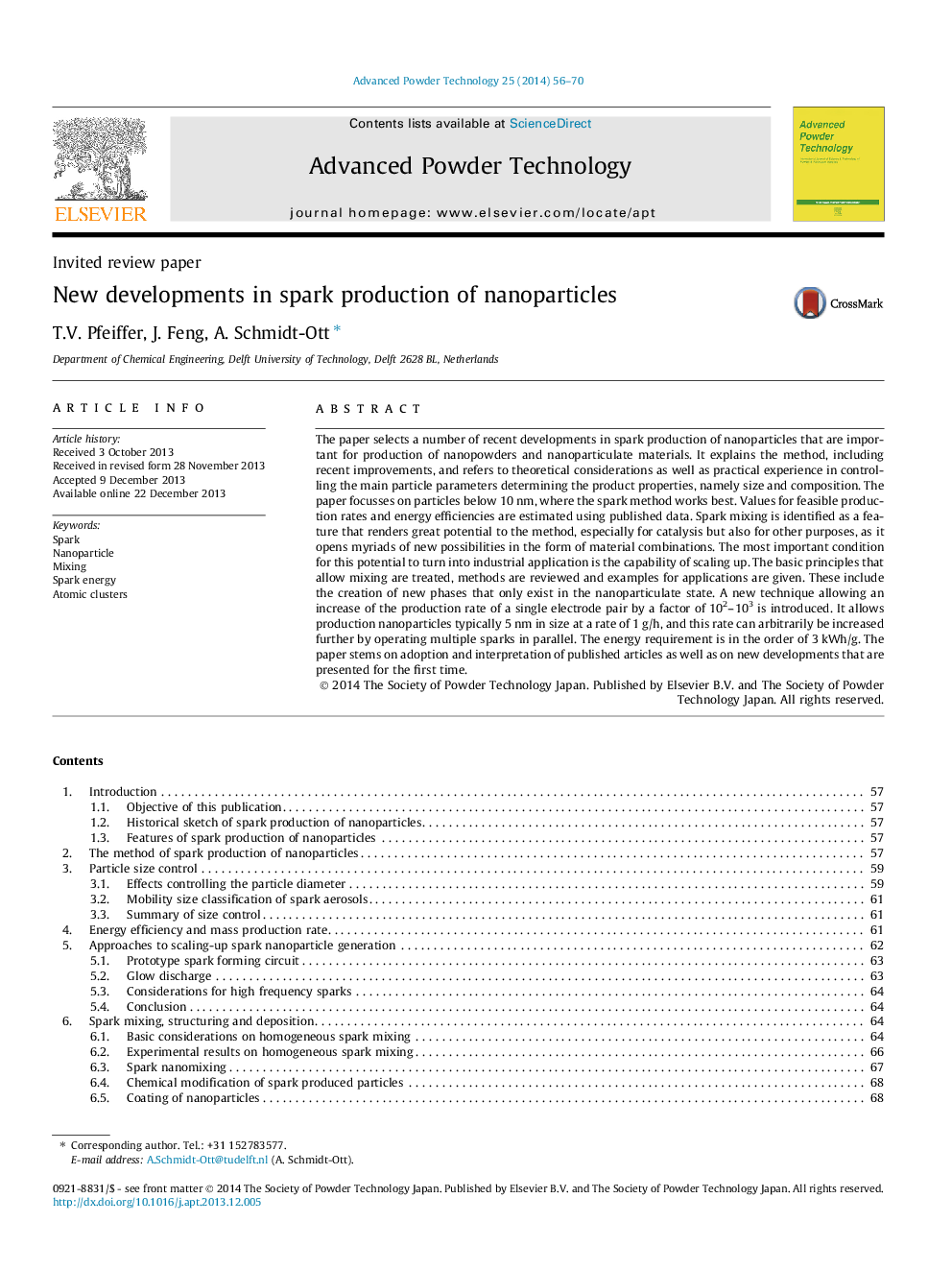| کد مقاله | کد نشریه | سال انتشار | مقاله انگلیسی | نسخه تمام متن |
|---|---|---|---|---|
| 144046 | 438921 | 2014 | 15 صفحه PDF | دانلود رایگان |
• Spark ablation produces particles and powders from atomic clusters to the nm range.
• Spark mixing enables a myriad of new functional materials, e.g. for catalysis.
• Spark production of nanoparticles or powders is continuous, clean and scalable.
• The method does without precursors and is thus environmentally friendly.
• A new switching circuit produces 1 g/h of 5 nm particles per electrode pair.
The paper selects a number of recent developments in spark production of nanoparticles that are important for production of nanopowders and nanoparticulate materials. It explains the method, including recent improvements, and refers to theoretical considerations as well as practical experience in controlling the main particle parameters determining the product properties, namely size and composition. The paper focusses on particles below 10 nm, where the spark method works best. Values for feasible production rates and energy efficiencies are estimated using published data. Spark mixing is identified as a feature that renders great potential to the method, especially for catalysis but also for other purposes, as it opens myriads of new possibilities in the form of material combinations. The most important condition for this potential to turn into industrial application is the capability of scaling up. The basic principles that allow mixing are treated, methods are reviewed and examples for applications are given. These include the creation of new phases that only exist in the nanoparticulate state. A new technique allowing an increase of the production rate of a single electrode pair by a factor of 102–103 is introduced. It allows production nanoparticles typically 5 nm in size at a rate of 1 g/h, and this rate can arbitrarily be increased further by operating multiple sparks in parallel. The energy requirement is in the order of 3 kWh/g. The paper stems on adoption and interpretation of published articles as well as on new developments that are presented for the first time.
Figure optionsDownload as PowerPoint slide
Journal: Advanced Powder Technology - Volume 25, Issue 1, January 2014, Pages 56–70
